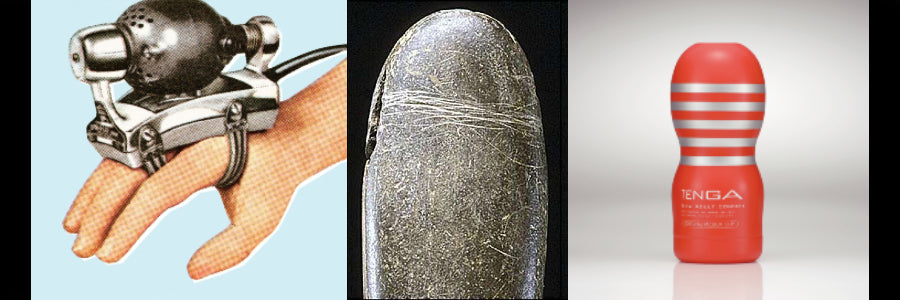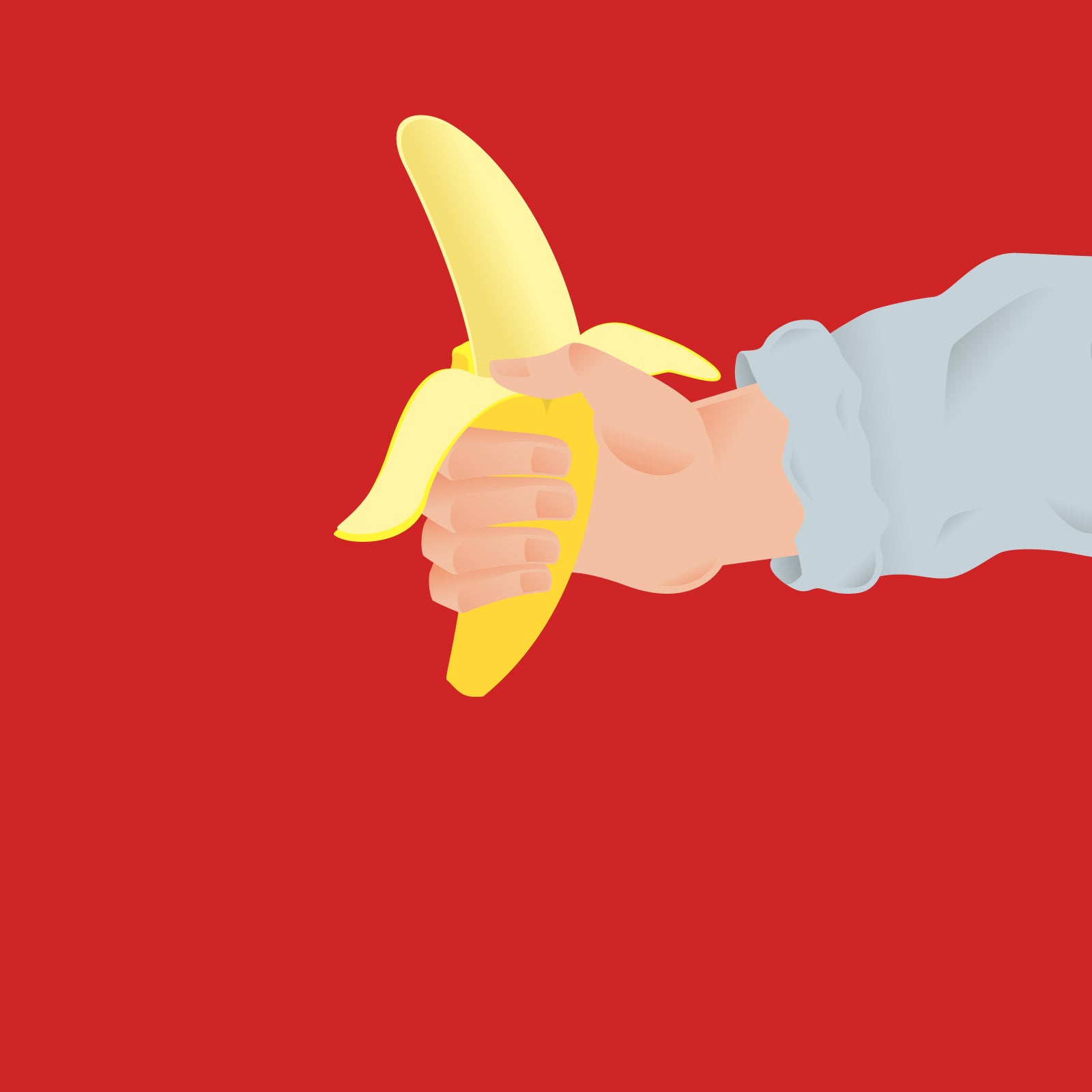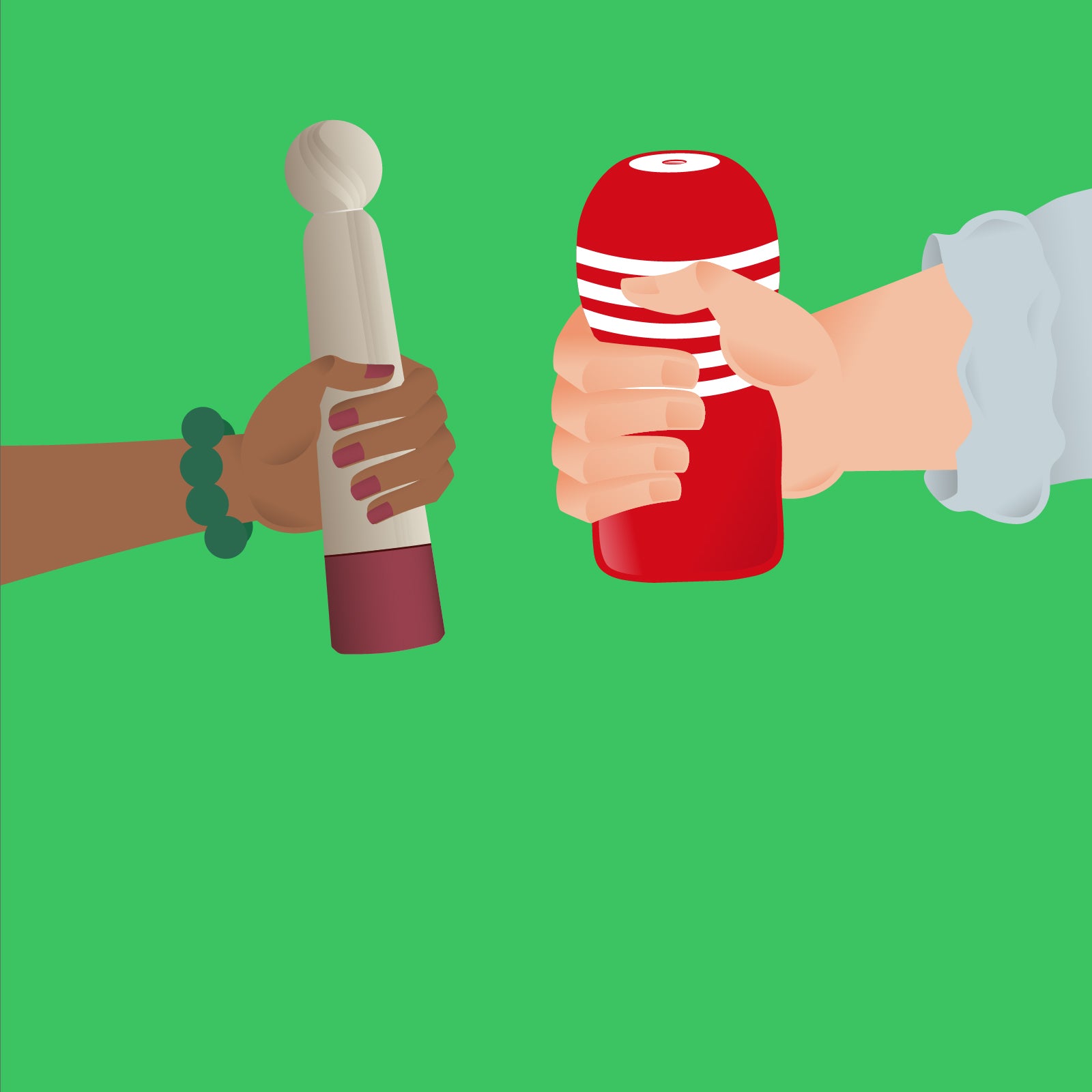
The Language of Sex Toys
Sometimes reading about sex toys can be confusing, full of new and unfamiliar words.
As new materials and types of products came to be, new language was needed to describe it all.

This article will help explain some of the most common and important terms, taking a look at the materials used in all sorts of toys, as well as a deep-dive into toys for penises, that will get you speaking the language of pleasure items in no time.
Content
Materials Matter
The materials used in sex toys are very important, to ensure user safety. Let’s have a look at important language to look out for to make sure self-pleasure is safe.
Chemicals and Properties

Body Safe
This is often interchanged with non-toxic. The general meaning is that the product is not made of materials that can harm your body, such as phthalates.
Phthalates
Despite the funny-sounding name, this chemical - that is used to soften plastics - has been linked to a whole range of issues. The most important one in this case is how it can affect the reproductive system.
BPA (Bisphenol A)
This is a chemical that is added to plastics to make it more resilient. However, in the body it can interact with hormone receptors causing various problems, including with reproduction.
Mainly it enters the body through ingestion, and there is still debate on ‘how much is too much’, but better to lower exposure to be safe.
Parabens
A preservative used in lubricants due to being bactericidal and fungicidal. Although not definite, there are some worries excessive build up could affect hormone receptors in the body.
Porous
This means that the material has small openings that can harbor bacteria. This means that it is not suited for toys that are used internally, as the bacteria can pass through the mucous membranes of the body. Due to the nature of this material it cannot be fully sterilized.
Li-ion
Lithium-ion batteries are popular batteries for rechargeable products (such as vibrators). It is important to be careful not to damage them, subject them to high pressures and/or temperatures, to avoid fire hazards or explosions. Li-poly (lithium-ion polymer) batteries are more stable but more expensive.
Materials

Elastomer (TPE - Thermoplastic Elastomer)
These are polymers that are soft, can stretch, and return to their original shape. TPE is therefore a great material for making sex toys. TPE is softer than silicone, and is hardened through heat. While great for solo use, TPE is porous (see above section) so be sure to thoroughly wash and air dry to ensure hygienic reuse, but not with new partners.
Polyurethane (PU) and Thermoplastic Polyurethane (TPU)
This plastic material has many uses, depending on application. In sex toys Polyurethane can be used as soft foam, or as TPU, a type of TPE (see above). TPU is a newer type of TPE, so it has similar properties, but is harder and rougher.
Silicone
This material, if 100% pure, can be one of the safest materials to use. Non-porous and highly durable, it can safely be boiled to clean (although beware of boiling any product that houses electronics!). However, it comes at a higher cost and can be a little too hard for some people’s comfort. Silicone is harder than TPE and is hardened when cooled.
Latex
Latex is a type of rubber, used mostly for condoms and clothing, it is important to be careful if you have an allergy.
Vinyl (PVC - Polyvinyl Chloride)
A cheap plastic polymer that can be rigid or soft. Phthalates are used to make it softer, therefore it is not a safe material for sex toys.
Types of Penis Products
Although some words are clear (such as cock ring) others might make you scratch your head. The following list should make things easier to understand:

Sheath - As the name implies, items named "Sheath" sheathe your penis. They have different uses such as for pleasure, with details inside, or for use during intercourse as they can create new sensations and help with premature ejaculation. In this field there are also extenders, used to increase the size of the penis for coupled play.
Sleeve - The soft inner part of male masturbators. Can also be used by itself like a stroker (see below).
Stroker - Used to stroke. These are products that the penis is inserted into, and then moved up and down (stroked) for pleasure.
Masturbator - You may also see this term commonly used to mean "male pleasure item" (such as sleeves or strokers).
What Goes on Inside?
For the most part, cross section diagrams of different products are good at showing what to expect, but there might be a few key words that are good to know.

Tapering - This means that the item starts out wide and becomes narrower. For strokers it means it gets tighter the deeper in it goes, and for insertable items, the base is wider than the tip.
Flared - This word it used for insertable products, especially anal toys. The base is very wide compared to the rest of the item, so that it cannot completely enter the body (and possibly get stuck). Confusingly, sometimes people use this term to mean tapered as well.
Textured - This simply means that the surface that is in contact with the body, and therefore brings pleasure, is not smooth. Instead there could be any number of stimulating patterns of nubs, ridges and grooves.
Summary
This is by no means a comprehensive list, but hopefully will help in deciphering the world of sex toys.
For words that are TENGA exclusive, please read this blog post to familiarize yourself with all things TENGA.
Now that you understand the lingo, it is time to go out and discover all the possibilities that sex toys have to offer!






